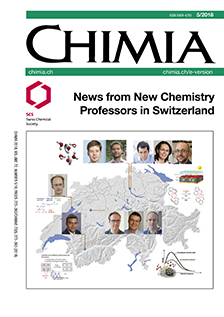Exploring Modular Glycolipids Involved in Nematode Chemical Communication
DOI:
https://doi.org/10.2533/chimia.2018.297Keywords:
Ascarosides, Chemical ecology, Glycolipids, Modular metabolites, NematodesAbstract
Chemical communication in nematodes has been known for over half a century, but the underlying molecular basis remained largely elusive. Recent advances in analytical techniques facilitated the characterization of a modular glycolipid library based on the dideoxysugar L-ascarylose, which modulates behavior and development in the model organism C. elegans. Ascaroside signaling is highly conserved in nematodes and represents a key factor in nematode chemical ecology. Ascaroside biosynthesis depends on the co-option of the peroxisomal ?-oxidation cycle and in addition integrates a large diversity of additional building blocks derived from various primary metabolic pathways to give rise to species-specific modular assemblies, thus, transcending the concept of strictly segregated primary versus secondary metabolism.Downloads
Published
2018-05-30
Issue
Section
Scientific Articles
License
Copyright (c) 2018 Swiss Chemical Society

This work is licensed under a Creative Commons Attribution-NonCommercial 4.0 International License.
How to Cite
[1]
Chimia 2018, 72, 297, DOI: 10.2533/chimia.2018.297.







